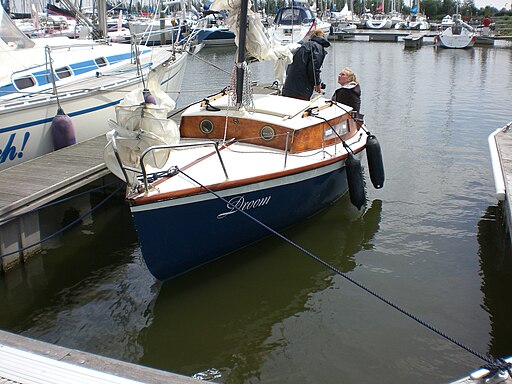A long post today, so I hope you like this piece of insight.
When it comes to choosing a dream boat for your sailing adventures, the options can be overwhelming. From sleek designs to cutting-edge features, every boat seems to offer something enticing. To navigate this sea of choices, I turned to a valuable prioritization framework called MoSCoW. And In this blog post, I’ll try to guide you through the MoSCoW prioritization technique and how I applied it to create my shortlist of vessels responding to my sailing dreams.
Understanding the MoSCoW Prioritization technique
MoSCoW is a technique I regularly use in my professional life and is a project management tool to categorize and prioritize requirements. The acronym stands for Must-have, Should-have, Could-have, and Won’t-have. By classifying features and criteria into these categories, you can gain clarity on what is essential, what is desirable, and what can be sacrificed.
Must-Have: Non-negotiable Essentials
The “Must-Have” category represents the absolute necessities—features or characteristics that are crucial and indispensable for your dream boat. These are the factors that would make or break your sailing experience. Whether it’s safety equipment, a specific sail configuration, or a reliable engine, these aspects take precedence over everything else.
Should-Have: Desirable and Important
In the “Should-Have” category, we find features that are not mandatory but highly desirable. These are the aspects that would significantly enhance your sailing experience and contribute to your comfort and convenience. While they are not deal-breakers, they are still important considerations that add value to your dream boat.
Could-Have: Nice-to-Have, but Not Essential
The “Could-Have” category comprises features that are considered additional luxuries or bonuses. These are the extras that would be delightful to have on your boat, but their absence wouldn’t significantly affect your overall sailing experience. It could be a state-of-the-art entertainment system, a spacious galley, or custom interior finishes—features that are desirable but not vital.
Won’t-Have: Exclusions and Trade-offs
Lastly, the “Won’t-Have” category includes features that you consciously decide to exclude from consideration. These are the aspects that, while they may be appealing to others, don’t align with your specific needs, preferences, or budget. By identifying what you won’t prioritize, you can focus your search on the qualities that truly matter to you.
Applying MoSCoW to narrow down my search
Now that we understand the MoSCoW prioritization framework, let’s dive into how I used it to select my dream boat. Through careful consideration and evaluation, I assigned specific boat characteristics to its respective category, aligning these with my specific needs and aspirations. You do not have to be fancy about it, some simple lists in Excel or just on a piece of paper will do. A huge disclaimer here; what follows is my personal analysis, it does not mean it is perfect for you or a mandative list. Heck, you might have other priorities or characteristics. Me sharing this, is about showing how I did it so it can be of inspiration to others.
Must-Haves
I identified the essential elements that were non-negotiable for me. These included safety features, a reliable hull, a specific size range suitable for my sailing plans, and other fundamental requirements that formed the foundation of my boat selection process. So, what are my criteria here?
I’m looking for a coastal cruiser, with a manageable length so it is easy to sail solo or shorthanded. The boat must be seaworthy, after all I will be sailing in coastal waters, therefore the boat must have a proven and popular design, with a long keel or a fin with rudder-on-skeg. The boat must have enough room for our little family of 2 and a dog. As I will not be doing just day sailing, having a toilet on board is a must, as are cooking facilities. Finally, the boat must come with a proper paper trail, because you need to be able to prove that VAT has been paid.
Should-Haves
Next, I looked at those elements that would enhance my sailing experience. This encompassed considerations such as comfort amenities, a functional and well-designed layout, efficient storage solutions, and any other factors that would contribute to a smooth and enjoyable journey.
What I noted was that the future boat should have charm, or character, or whatever you want to name it. If I am going to spend time on a boat, I want a logical, warm interior with comfortable cushions. Working electrics, even if it is just a basic set up, should also be present. In general, the boat should be in a good state of maintenance. Comfort in the cockpit is also important so the boat should have at least the possibility to bring all lines to the cockpit and the ability to be equipped with spray hood and dodgers. Talking about canvas, the boat should have a decent set of sails.
Could-Haves
In this category, I listed the features that would be nice to have but were not critical. While I appreciated these additional luxuries, I recognized that their absence would not hinder my ability to embark on and enjoy my sailing adventures.
The list of items that the future boat could have, is much longer. But a few things that I noted to consider in my spreadsheet were: Extra sleeping places, Cushions for the cockpit, wheel instead of tiller steering, All lines to the cockpit, Windvane or auto helm, Furlers, Additional sails, Tender, New cushions/fabrics, and I also noted that the boat could have small Items to fix or little paint work to lower the price.
Won’t-Haves
Lastly, I established for myself what I was willing to sacrifice or exclude from my boat selection. By acknowledging the aspects that didn’t align with my needs or budget, I refined my search to focus on the qualities that truly mattered to me.
For me the future boat cannot have issues or tons of work due to neglect. It cannot have restauration needs like a broken or dismounted engine, weak spots in the deck or elements missing in the standing rigging. I also cannot afford to ignore changes in a boat’s design as they can impact the seaworthiness of the ship. So, my future boat won’t have a “redesigned” interior, “redesigned” electrics or other visible botch jobs. It also won’t have more than two sails to manage and above all no teak deck. Don’t get me wrong, it is beautiful, but the time and costs of maintaining repairing a teak deck most of the time lead to neglect in maintenance and problems in the deck layers underneath.
Conclusion
Using the MoSCoW prioritization technique allowed me to navigate the vast sea of boat options and select my dream vessel with confidence. By categorizing boat characteristics into Must-Have, Should-Have, Could-Have, and Won’t-Have, I could prioritize my needs and preferences effectively. Armed with this knowledge, I am able to embark on my sailing journey, knowing that my chosen boat has the essential features, desirable qualities, and corresponds to my dreams and needs.
I hope this blog gave you some valuable insights on how I did narrow down my choices and how you could apply the same to situations in your life.
Fair winds,
Steph


